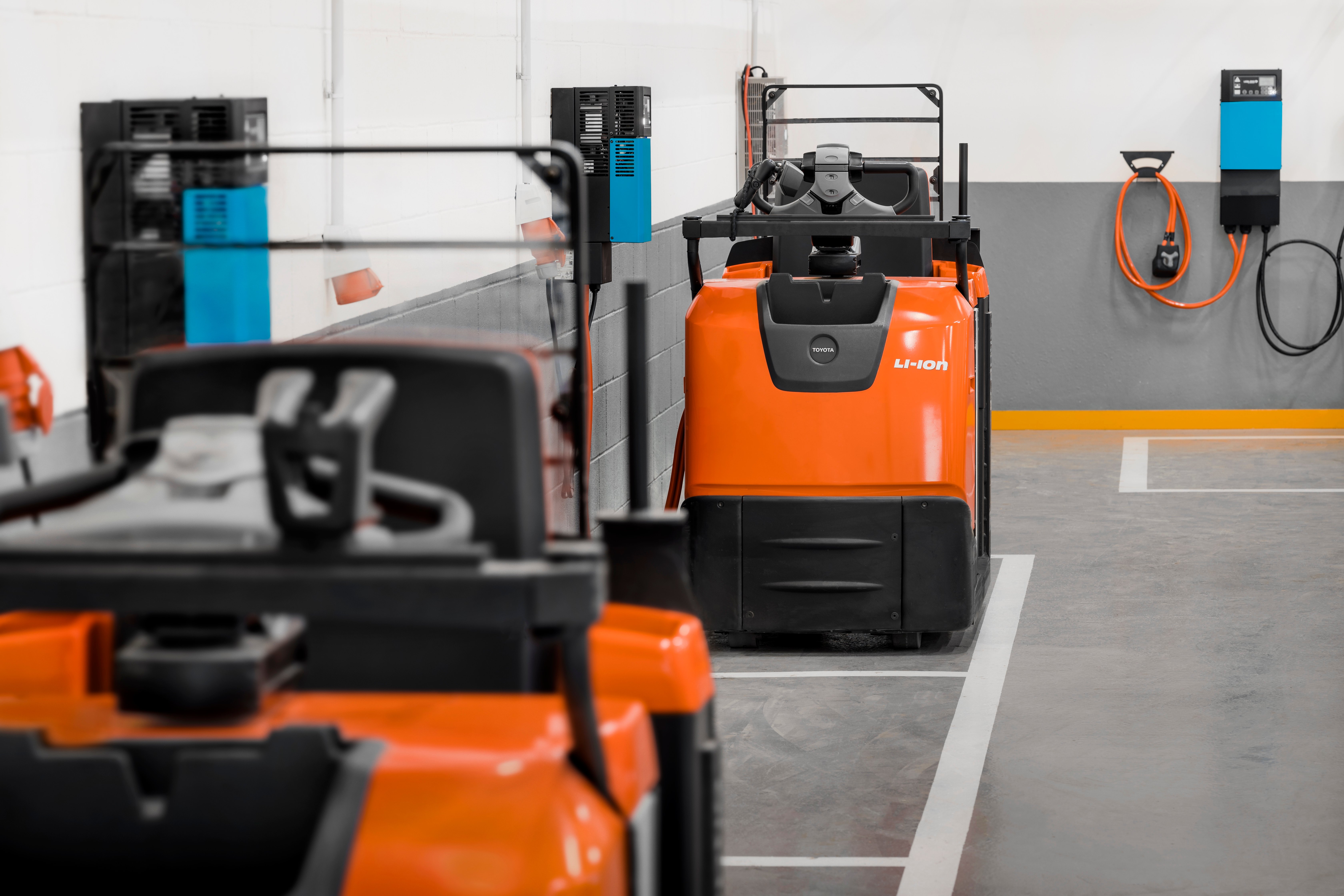Resilience and energy efficiency are crucial in today’s turbulent economic climate. Though costs have come down slightly, you cannot control energy prices for electricity as such. However, managing your warehouse fleet in a smarter way can impact your energy consumption positively. How to get started?
Power plan to combat energy shortages
In Europe, more than half of all energy consumed is imported, making warehouse operators dependent on supply and vulnerable to price jumps.
Energy providers are trying to control the imbalance between power generation and peaks in power consumption to prevent a total crash of the power grid. Selective power cuts, i.e., a controlled shutdown of the power supply, are already a reality in some areas.
More energy-efficient equipment such as Lithium-ion batteries and smart energy management can help you maintain a steady competitiveness and avoid peak demand charges or blackouts, while ensuring the power you need for your daily operation.

Where Li-ion makes the difference in energy efficiency
Lithium-ion batteries are far more energy-efficient compared to lead-acid batteries, around 30%, a valuable asset given today’s market. That is why investing in Li-ion counterbalanced forklifts to tackle a looming energy crisis is not as contradictory as it may appear.
Lithium-ion batteries also allow for opportunity charging which means they can be recharged at any time and level without affecting battery life. This makes loading times more flexible so you can keep the battery up and running during the full shift.
Matching the right battery with the right charger and selecting the right charger size used to be critical. Toyota smart chargers automatically select the right voltage and current. You can also reduce the current on the chargers if you set a maximum output. Slow paced charging will limit the rush for power, and thus reducing your energy peaks.

Use data to make smart decisions
In groups of chargers, you can set charging modes to follow certain patterns: batteries most in need will be charged first, the rest will wait in line to be charged next. Toyota smart chargers come with this park & charge feature – Dynamic Power Limitations (DPL) – as standard.
Our chargers work to reduce energy peaks and manage overall consumption, reducing energy costs. DPL chargers communicate with each other by radio, ensuring a group of chargers does not exceed the specified maximum current, avoiding current spikes. This shortens charging time and improves the energy efficiency of the battery charging: 15% of the energy is saved during charging and another 15% when the truck is used. With DPL you can also charge at times when the power is cheaper or during the daytime when solar power is available.

If you don't have a Toyota charger with DPL, another simple measure to level your power consumption, is to not charge the whole fleet at the same time. Limit the number of chargers or distribute charging stations over different facilities to guarantee a more even spread.
I_Site fleet management can be used to implement preventive charging. Charge planning can be worked out according to data extracted, letting operations charge if and when needed.
Power booster
Rooftop solar power – with a service company as partner – is a common sustainable solution providing green energy. A drawback can be the mismatch between electricity production and consumption, e.g., charging the batteries during the night. By storing electricity, power demand can be covered on site. Power from the grid then only becomes necessary when you run out of own produced green energy. Energy Storage Systems (ESS) and power banks offer stability and security.
When the grid becomes unreliable, fuel cells are also a good alternative. A fuel cell uses the chemical energy of a fuel, often hydrogen, and an oxidising agent, often oxygen, to efficiently convert the chemical energy and produce electricity. The H₂Genset is a flexible and mobile generator that transfers hydrogen through to electricity. An easy way to guarantee emergency power supply or to complement the conventional power grid.
Off the grid
Private or public, we all need more and more electricity for all types of appliances, and as the material handling industry is looking to shrink its fossil fueled fleet, power consumption will put power supply under tension.
Be smart in your energy management. Contact us today so we can help you fine-tune your operation.

.jpg)



